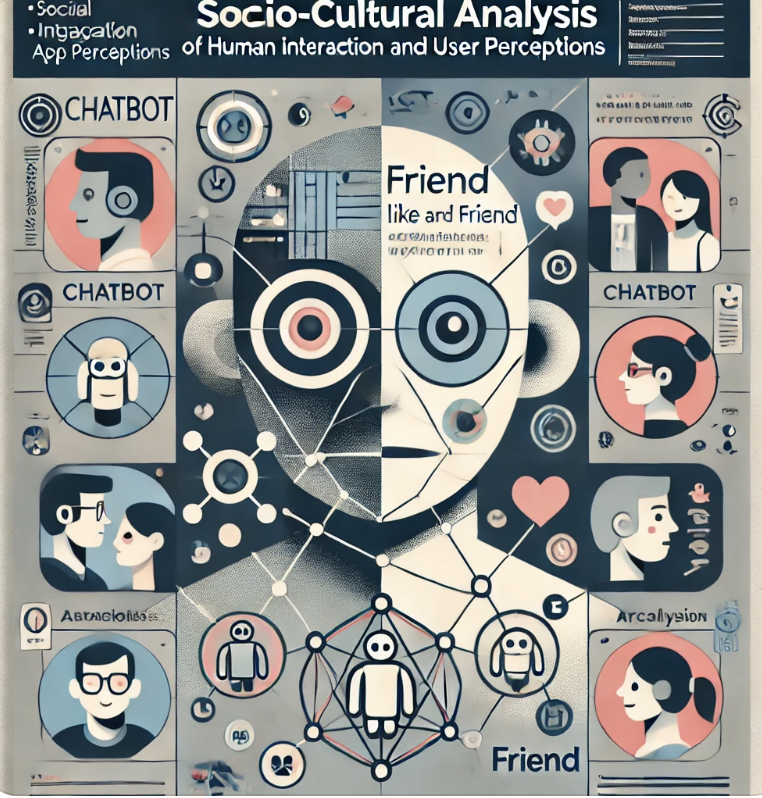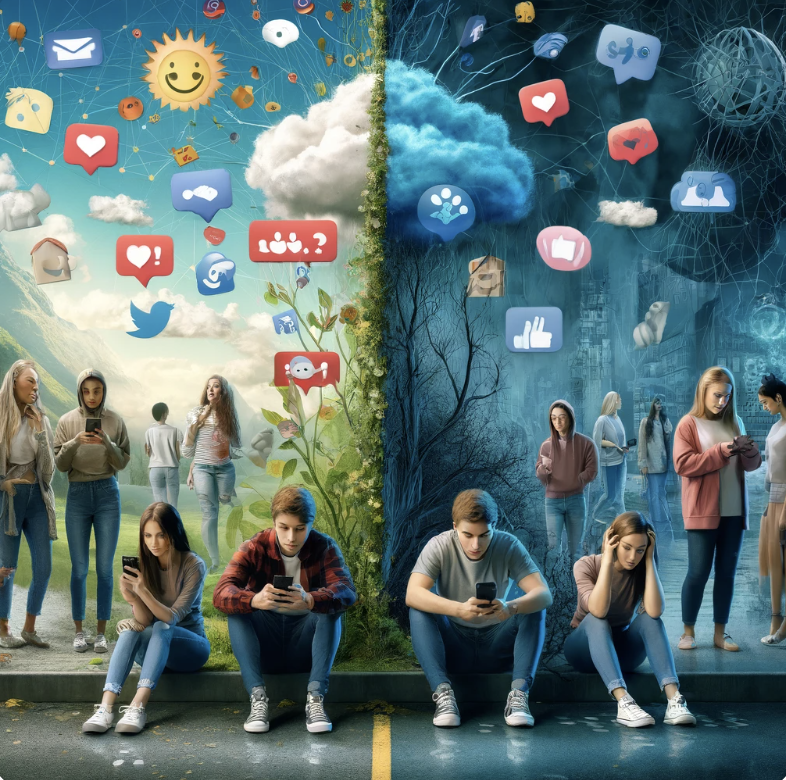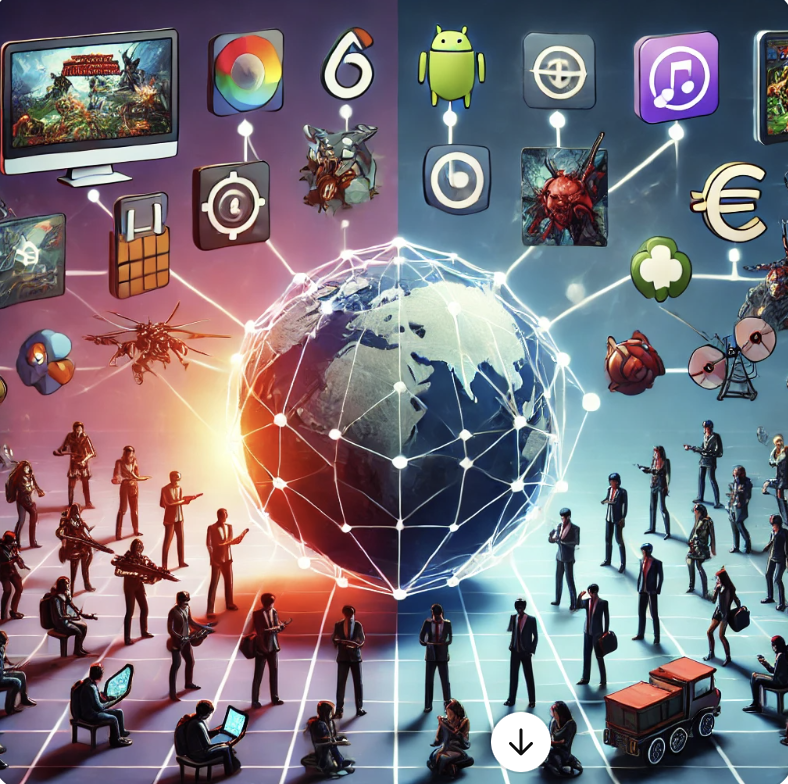TOPIC 1
The Interaction Process Between Technology and Society.
Based on the Individuation Perspective: Unveiling the Mutual Influence Between Living Beings and Technical Beings
-
Individuation, technical beings, living beings, Simondon, Guattari, media theory, complex temporalities, subjectivity, transhumanism, automation.
-
This paper explores the dynamic interaction between living beings and technical beings through the lens of Simondon's individuation theory. By examining the processes of individuation for both living and technical objects, the study reveals how these beings influence one another. The paper highlights three key dimensions of interaction: 1) living beings and technical beings as associated milieus, 2) their complex and interwoven temporalities, and 3) the expanded definition of technical objects to include symbolic systems, such as Guattari's social and desiring machines. Through these frameworks, the mutual influence between humans and media, as technical beings, is analyzed. The paper critiques the existing framework, warning of the diminishing distinctiveness of humans in an automated future, and calls for further research on the implications of transhumanism. Ultimately, the study advances our understanding of how living beings and technical beings shape each other in contemporary media and technological landscapes.
Investigating ChatGPT's Political Standpoint: A Comparative Assessment Using Political Tests
-
Bias, Political bias, ChatGPT, Political tests
-
This article investigates the current academic discourse regarding the claims of "left-wing bias" in ChatGPT, exploring the challenges of identifying and addressing ideological biases in AI models. Through diverse political tests such as the Political Compass, 'Woke' test, and 9Axes, this article analyzes the ideology of ChatGPT itself, as well as its portrayal of views related to the Democratic and Republican parties. Results reveal nuanced political orientations, showcasing ChatGPT's alignment with left-leaning ideologies like multiculturalism and globalism while maintaining a moderate stance in various dimensions. This study emphasizes the importance of ongoing transparency and scrutiny in AI development to promote fairness and inclusivity in conversational systems, while also cautioning against exaggerated claims of bias.
Unveiling Chatbot APP Characters: A Socio-Cultural Analysis of App Representations and User Perceptions
-
Chatbots, Socio-cultural analysis, User perceptions, Applications, Social interaction
-
This paper presents a socio-cultural analysis of chatbot applications, investigating how developers convey characters to users and examining user perceptions. Through word frequency analysis and co-occurrence network analysis of 110 chatbot apps collected from Google Play, this study reveals prevalent character combinations and underlying design logics. Results indicate a preference for endowing chatbots with social functions, particularly emphasizing human-like images and friend identities. This construction of characters aims to create familiarity and enhance user engagement but also reflects underlying biases and stereotypes. Findings underscore the importance of critically examining the design logic and potential social impacts of chatbot character representations.
Unveiling Gender Bias: A Comparative Analysis of Sexualization in Google Image Search Across English and Greek Languages
-
Google Image Search, gender representation, sexualization, algorithmic bias, cross-language analysis
-
This paper examines the dynamics of gender representation and sexualization in Google image search results, with a particular focus on the portrayal of genders across different occupational domains and the disparities observed between English and Greek language search results. The research findings reveal that while Google demonstrates efforts to maintain diversity and reduce biases in English language results, Greek language results exhibit a higher prevalence of sexualization towards women. Surprisingly, male sexualization in “neutral professions” in English results was found to be more prevalent than commonly assumed. This prompts a deeper examination of the algorithmic mechanisms governing image search outcomes. The paper proposes a hypothesis suggesting that societal awareness and scrutiny may lead to more stringent filtering of female sexualization in algorithms, while male sexualization may not receive equal attention.
Algorithmic Engagement: TikTok’s Influence on Public Perception of the Israel-Palestine Conflict
-
TikTok, Israel-Palestine conflict, algorithmic engagement, social media, public perception, news dissemination, user-generated content, digital media, media bias, conflict reporting.
-
This research examines the role of TikTok in shaping public perception of the Israel-Palestine conflict through its algorithmic engagement. As TikTok grows as a major platform for news consumption, particularly among younger audiences, we investigate how conflict-related content from individual and institutional accounts varies in reach, engagement, and stance. Using a combination of quantitative and qualitative methods, we analyze content related to Israel, Palestine, and Hamas queries, exploring how TikTok’s algorithm amplifies or suppresses certain narratives. Our findings indicate that individual accounts, especially those supporting the Palestinian perspective, garner higher engagement rates compared to institutional accounts, which dominate only in terms of views. The study highlights TikTok’s unique role in information dissemination and how its algorithm shapes user interaction with sensitive global issues, raising questions about the platform's influence on news credibility and public discourse.
Exploring Surrealist Aesthetics in AI-Generated Photos: An Instagram Odyssey
-
AI-generated photography, surrealism, Instagram, digital aesthetics, AI art, content analysis, style analysis, new media, visual culture, social media art.
-
This study explores the aesthetic characteristics of AI-generated surrealist photography on Instagram. Focusing on a dataset of 88 highly-interacted surreal photos from the #AIphotography hashtag, we examine both content and style. The research identifies key methods through which AI creates surreal imagery: mixing sizes and positions, juxtaposing elements based on shape similarity, and blending biotic and abiotic features. AI-generated surrealism often defies rational relations and real-world logic, with an emphasis on dark tones, cool hues, and complementary colors. By analyzing both visual and content-based patterns, the study provides insights into the aesthetic preferences of AI in generating surrealist art. Our findings highlight AI's unique ability to produce fantastical visuals, raising questions about the machine's creative processes compared to human artistry. This research contributes to the growing field of digital aesthetics and AI-generated art while addressing the gaps in scholarly work surrounding surrealist imagery on social media platforms.
TOPIC 2
Labor, Surveillance, and Resistance in Digital Capitalism
Digital Labor in the Platform Economy: A Marxist Exploration
-
Digital labor, platform economy, Marxism, platform capitalism, digital infrastructure, McLuhan, platform labor, governance mechanisms
-
This paper combines insights from platform research centered around the theoretical frameworks of Marshall McLuhan and Karl Marx to develop a new framework for analyzing digital labor in the platform economy from a communist perspective. It emphasizes the need to adapt Marxist concepts of labor to digital media platforms, recognizing how platforms mediate and organize labor transactions. By proposing a governance mechanism led by digital infrastructure, this study explores potential developments of platform capitalism within this framework. The paper reinterprets traditional Marxist models of labor and capital to address the challenges and opportunities posed by platform economies and suggests a possible future trajectory for digital labor governance that aligns with socialist principles.
The Era of Digital Taylorism: Capital’s Surveillance and Worker Alienation
-
Digital Taylorism, workplace surveillance, KPI, crowdsourcing, Chinese internet companies, labor exploitation, worker privacy, digital management
-
This paper explores the phenomenon of Digital Taylorism in modern Chinese internet companies, where digital tools such as workplace surveillance, key performance indicators (KPIs), and crowdsourcing systems are used to manage employees, intensifying worker exploitation. Building on classic Taylorism principles, Digital Taylorism involves the use of advanced technologies to monitor and control both manual and intellectual labor, creating a system of continuous oversight and performance assessment. By examining case studies of Chinese internet companies, this paper highlights how the oversupply of young talent, coupled with digital management strategies, leads to a highly competitive work environment, workplace alienation, and reduced job security. Additionally, the paper critically assesses the impacts of these management systems on worker privacy, stress, and overall well-being, drawing parallels between modern practices and the oppressive systems of control in historical labor models. This analysis underscores the need for new governance frameworks to mitigate the adverse effects of Digital Taylorism on workers.
Challenging the Watchers: Resistance in the Surveillance Era
-
Surveillance Capitalism, Technological Countermeasures, Double Movement, Artificial Intelligence, Big Data, Digital Divide, Social Inequality, Privacy Protection, Social Network Analysis.
-
In the era of surveillance capitalism, artificial intelligence and big data technologies are widely used to monitor and influence human behavior, leading to social inequalities. As people become increasingly aware of this pervasive control, new forms of “double movement” (Karl Polanyi, 1944) have emerged. This paper focuses on technological countermeasures developed to protect individual privacy and challenge the dominance of surveillance capitalism.
This paper establishes a preliminary classification framework for these technological countermeasures, categorizing them into four forms: confrontation, concealment and disguise, decentralization, and avoidance. Subsequently, the paper analyzes the adoption and dissemination of these countermeasures in different social networks through discussions on TikTok, constructing a social network analysis framework. The findings indicate a much higher preference for confrontational technologies over other types, with the main concerns about emerging technologies centered around the cost. Economically, affluent groups have greater access to high-cost privacy protection technologies, while low-income groups can only rely on free but limited-function tools, which may lead to the widening of the digital divide. Culturally, the new forms of “double movement” have high barriers to entry and are generally more complex to operate, making them more easily accepted and used by tech-savvy groups, leading to the concentration of these countermeasures within that group. This disparity in dissemination may further reinforce their central position in the network, marginalizing technologically disadvantaged groups, creating the information gap, and exacerbating social inequality.
This paper fills a gap in the current research on technological countermeasures. The paper advocates for lowering the barriers to social countermeasures or implementing more effective strategies to stimulate broader social action and promote social equity and justice. For example, measures such as government policies or the provision of universal privacy protection tools could prevent the further exacerbation of social inequality.
Facial Recognition Ethics in Surveillance Capitalism: An Examination through Utilitarian and Marxist Frameworks
-
Surveillance capitalism, facial recognition, utilitarianism, Marxism, computer ethics, privacy, exploitation, capitalist exploitation, digital surveillance, ethical frameworks.
-
Surveillance capitalism represents a new stage in the development of capitalism. Supporters of facial recognition technology argue that it aligns with the utilitarian pursuit of maximizing satisfaction by meeting individual needs. However, critics contend that facial recognition expands surveillance, intensifying capitalist exploitation. This paper constructs two ethical frameworks, utilitarianism and Marxism, to examine facial recognition technology within the context of surveillance capitalism. Through theoretical analysis and case studies, the paper critically evaluates facial recognition technology from the perspective of computer ethics. It contrasts the utilitarian focus on outcomes that maximize societal happiness with the Marxist critique of exploitation and alienation, exploring how both frameworks assess the ethical legitimacy of facial recognition technology. Furthermore, this paper proposes that facial recognition technology in surveillance capitalism must be scrutinized for its role in exacerbating social inequality and violating individual rights.
OTHER TOPICS
Social Media Affects Self-esteem? Explore the Impact of Social Media Using on Self-esteem, Living Environment and Healthy Interaction
-
Social media, self-esteem, satisfaction, social phobia, social media dependence, anxiety, sense of belonging
-
As social media continues to dominate everyday interactions, its impact on self-esteem, living environment satisfaction, and social anxiety has become an important area of study. This research investigates the direct and indirect effects of social media usage on self-esteem, drawing from a survey of university students (N=658). Data were analyzed using IBM SPSS Statistics 27, employing techniques such as factor analysis, regression, and ANOVA to explore the relationships between variables. Our findings indicate that while social media can foster a sense of belonging, excessive use may lead to anxiety and reduced self-esteem. This research contributes to understanding how social media use can both positively and negatively affect individuals’ psychological well-being and offers insights into promoting healthier social media habits.
Platform Chronicles: Tracing the Evolution of ACG Culture on Bilibili
-
ACG culture, Bilibili, subculture, mainstream culture, digital platform, website evolution, commercialization, visual hierarchy analysis, internet archive, Chinese internet culture.
-
This paper examines the evolution of ACG (Anime, Comics, Games) culture on Bilibili, a leading platform for ACG enthusiasts in China. By tracing the transformation of Bilibili's website structure and content through the Internet Archive’s Wayback Machine, the study explores how the platform has shifted from a subcultural hub for ACG content to a mainstream social video site. Utilizing a combination of visual hierarchy analysis and content analysis, the research identifies three stages of Bilibili’s development, each reflecting the increasing influence of commercialization and mainstream culture on the platform. The findings reveal that while ACG content remains central, it has been progressively marginalized by lifestyle and consumer-oriented content. This paper contributes to the broader discourse on how subcultures evolve and are absorbed into mainstream culture, with Bilibili serving as a case study of this process in the context of Chinese internet platforms.
Global Gaming Flow: A Comparative Analysis of Mobile Game Import/Export Patterns and Genre Preferences in Asian and Western Markets
-
mobile apps, app store studies, gaming culture, game studies, globalisation
-
After the COVID-19 pandemic, mobile gaming has rapidly risen and replaced music and films as the most important aspect of youth culture. This study analyses the Top-100 downloaded mobile game applications in ten Western and Asian countries, aiming to explore the cultural dynamics and globalisation of digital entertainment. Through the empirical approach to App ecosystem analysis, the study reveals each country’s gaming preferences and explores the cultural motivations behind them. The paper fills a gap in mobile gaming research and critically discusses traditional views on cultural invasion.













